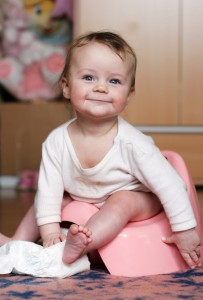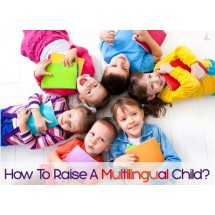
Potty training is another milestone in your child’s growth! Many parents are worried about this stage, having heard stories of how difficult the process can be. Take heart though, potty training can be a proud parenting moment to witness your child’s development, achieved in a week even!
First Step: Know when to Start Potty Training
Don’t let your competitive side get better of you and no shame if your child is potty trained later than your neighbor’s. The age of potty training surprisingly differs quite a fair bit in different societies, some may even start in the baby’s first year though it is more common to be around age of two.
Here are some signs that your child is ready for potty training:
1. Able to walk to potty, sit for few minutes and pull up underwear
2. Able to follow instructions and communicate the need to go potty
3. Able to stay dry for two hours or so
4. Express desire to not wear diapers (just like his friends) or dislike soiled diapers
5. Healthy, not stressful and cooperative stage of development
 Should I Start Potty Training Early?
Should I Start Potty Training Early?
There are pros and cons to both sides – the advantages of being off diapers early is:
a. Less cost of diapers
b. Doing away with hassle of changing diapers
c. The child being independent earlier
d. Reducing risk of diaper rash and related infection from occlusion with urine/feces or touching the feces
e. Reduce incontinence risk later in life
f. More child care alternatives!
The downside of starting potty training early is that:
More adult supervision (translate to more of your time!) is required.
However, this is not to say that starting later is going to be easier because some older children may resist to change and use potty training as an authority testing time. There is no study that conclude the ideal age to potty train so the timing does depend on your family’s situation and both parents being in agreement.
Ready, Let’s Potty Train!

With both parents on board to start off potty training, here are 5 tips for a smooth potty training!
1. Getting your Child Ready
It is recommended in most studies to get ready in stages. Before the actual potty training, you can read books with your child and encourage them that being able to go to toilet on your own is a HUGE sign of growing up. You can also show your child how to potty, for instance taking down pants, using the potty, dressing back up and washing hands. Prepare your home as well, for instance, set a place to potty train or better still, don’t have any rug or carpet that you have to constantly worry about being soiled. When it comes closer to the time when you feel is right, say a week anticipated to be light on other work load, prepare your child that potty training will be starting next week. Take the few days prior to shop for potty and underwear with your child – he/she may be very excited because underwear come in many favorite kids’ characters these days!
2. Start the Week without Diaper
This seems like a no-brainer but switching back and off between diaper and no diaper will signal to your child that potty training can wait. For faster potty training, set boundaries that diapers are only for nap and bedtime. Some parents choose to go without diaper in stages, for instance first not at home, then not when outside. That is ok too, but it will then likely take longer than a week to be fully potty trained. For parents who wish to potty train outside of the home, there is the portable potty or portable child’s toilet seat.
3. Have Everyone on Board
Potty training is a re-learning of habit, thus plenty of reminders are necessary. Start your child off each day going to the potty and proceeding with much fun the rest of the activities as per normal. At every hour or so, ask if he/she wants to potty and at regular interval, put him/her on the potty. If you need to go to work or be away from your child, be sure the other caregiver is ready to follow through. If your child goes to preschool, be sure to inform the teacher that potty training has officially started. If you can enlist the help of a playdate who is potty trained, that may even help encourage your child to go potty together as opposed.
4. Go Bottom Naked
While there are potty training pants which have a thicker lining, it may be good to allow for some naked bottom time. This serves more as a reminder for the child that there is nothing to catch the pee/poo and increases the likelihood of him going to the potty when the urge to pee comes.
5. One-Week Reward Chart
For older children who likes stickers or already understands the idea of rewards, a reward chart or treats to look forward to can help. You may be surprised that many children’s first reward chart is their potty training chart! Since the target is one week, the reward chart can be from Saturday to Friday, with goals such as pee/poo in my own potty or potty without reminder. Remember that positive reinforcement works better than negative comments, so avoid penalizing for accidents. Offer lots of encouragement too and don’t let accidents discourage you or your child.
Finally, if potty training cannot be achieved in a week, it is completely fine. Most children take a few months to be fully potty trained, so celebrate the path to toilet independence, even if it’s in stages!
By Mei






